|
Robert's Geranium (Geranium robertianum) is an introduced herbaceous weed. It is probably best known for its bright pink flowers and distinctly unpleasant smell if the foliage is crushed or bruised (earning it another common name, "Stinky Bob"). It is rumoured to be edible and has been used for a variety of medicinal uses, although at least one website cautions that there has been very little testing of side effects. It is one of the few non-native plants which can invade shady forests and I have seen it moving into some of the older forests on southern Vancouver Island.
Geranium is greek for "little crane's bill", in reference to the shape of the fruit.
0 Comments
 Bur Chervil (Anthriscus caucalis) is an introduced weed, similar to the garden herb, It is an aggressive colonizer in the meadow. It is a handsome plant, with fine, fern-like foliage with a strong smell when bruised or cut. The flowers are small and white. The plants here show an amazing diversity of sizes, from just a few inches high on trampled or drier sites with thin soils to robust plants over a meter high on moister, deeper soils. For the most part it seems to behave as a biennial here, forming a basal rosette the first year and flowering in the spring of the second year. 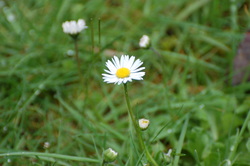 English Daisy (Bellis perennis) is a widespread exotic weed most commonly seen in lawns and other disturbed areas. There is can form impressive sweeps of white or pale pink in the early spring when it blooms. This is yet another weed that can be used in salads, although the leaves are best used when young, they become bitter as the plant ages. The word "daisy" is thought to come from the words "day's eye" in reference to the habit of this plant opening the flower in daylight and closing up again on cloudy days, or at night.  British Columbia has 5 species of Taraxacum, and this one, Taraxacum officinale is the commonest. Of the five, two are introduced and three are native. Here the main bloom of the species is late April or May, depending on the year, but flowers can pop out at any time, including warm spells in the winter. Dandelion is as well known for their seed heads as they are for their flowers and the parachuting seeds are amazing to watch on a windy day as the float soar away to disperse the seeds. The name is from the French "dent de lion" in reference to the jagged tooth leaves. 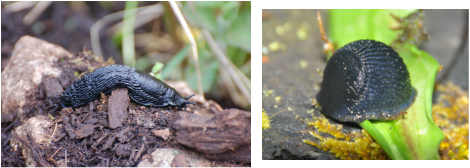 This large introduced slug is a familiar site for anyone that spends time outdoors on southern Vancouver Island. The species is introduced from Europe and can be a major garden pest. For many years we had very few of these at Leaning Oaks, but in the spring of 2013 the numbers increased greatly and the density of this species in the meadow and the garden was amazing. There are a number of common names used for this species, and Chocolate Arion undoubtedly refers to a brown morph of this species. Reddish colour forms (hence the Latin name Arion rufus) also exist but the commonest colour we see here is the jet black "Licorice Slug". 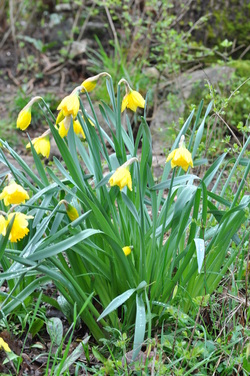 A. You are doing what for species a day?? B. You heard me, the daffodils. A. But is that in the spirit of this exercise? B. They have naturalized in the meadow, haven't they? A. Yes....but...just along the edge! And someone planted them. B. But we didn't; and besides that, did we plant the daphne or Himalayan blackberry or any of the other invasives that have been included here? Have we? A. No. But these are different. B. Why? A. We haven't pulled them out. B. Huh? A. I suppose they aren't just at the edge.... B. I am doing Narcissus pseudonarcissus A. Okay 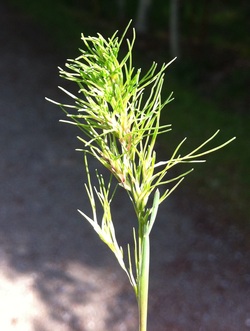 Bulbous Bluegrass (Poa bulbosa ssp. vivipara) is an introduced grass that grows in disturbed areas and dry places. Its a very distinctive grass because, instead of producing flowers and seeds like grasses usually do, the inflorence produce small bulbs which start to grow on the flowering head. As the summer approaches, this grass usually dries up, and the bulbs fall off and loose their leaves, but are able to resprout with autumn rains. This species has had an interesting history. First used in the west as an agricultural crop it was promoted as a weed control in alfalfa fields, where this grass could outcompete other species. Now it in itself is regarded as a weed in some parts of western North America. 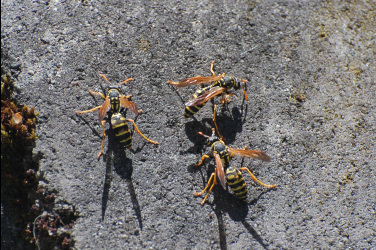 This is a recent arrival in B.C., with the first record from the province in 2003. Polistes dominula ( P. dominculus) spread quickly and our first record here at Leaning Oaks occurred in 2005. This species looks superficially like our native Paper Wasps and Yellow Jackets, but they are thinner-waisted and fly with their back legs dangling, which gives them a distinctive appearance. The make paper nests, but these lack the familar outer envelope of our Paper Wasps and Bald-faced Hornets. Instead the honeycomb shaped paper cells are plainly visible and guarded by attendant wasps. Biologically this is a fascinating species, with a lek breeding system, multiple founders at a colony, worker specialisation and swarming behaviour in the fall. The numerical increase and speed of spread is a bit alarming, and they can be at very high densities. They feed heavily on insects, especially caterpillars and the effect of this new species on our local ecosystems is not known. Nests are usually placed 1-2 meters above ground, often near or on human build structures. We have seen them on cedar-rail fences, in the brackets that hold our hot tub cover, mailboxes, under picnic tables, inside bird houses, in wood bins and under deck railings. The paper describing the discovery of this species in B.C. can be found here: http://journal.entsocbc.ca/index.php/journal/article/view/82  Purple Dead-Nettle is a distinctive introduced species that is frequently found in disturbed places and lawns on southern Vancouver Island. At Leaning Oaks it varies from year to year how much of this we have, and it is a common weed in our garden. The purple leaves on the flowering shoots are showier than the flowers themselves, and nearly the same colour. Lamium purpureum var. purpureum is in the same genus as Yellow Archangel (32.) and since both are weeds here, I must admit that its has discouraged me from using other species of Lamium in the garden. This species is usually an annual or biennial plant. They produce huge quantities of small seeds, in the hundreds or thousands. Irrigated, they continue to bloom well into the summer or fall. "Dead"-nettle refers to the fact that the species superficially looks like stinging nettle, but is "dead" or stingless. Hairy Bittercress (Cardamine hirsutum) is a non-native winter annual that grows in our Garry Oak meadow, along paths and in the garden. It flowers very early and by the first truly warm days of spring it is starting to form silicles (the seed pods) and is getting ready flick it seeds at the slightest touch. It can be an abundant winter weed in the garden. For a few tricks on controlling this pest see Dave's garden blog: http://gardennotesfromleaningoaks.blogspot.ca/
Yahoo-there are some flowers out in the meadow! Even if they are the European exotic weed Cerastium pumilum, it still is nice to see. It is a late winter/early spring annual, with tiny flowers that will bloom for about a month. Although it is sprinkled along the trails and meadow at Leaning Oaks, it likely doesn't impact any of the native vegetation.
It is hard to imagine what the landscape was like more than 400 years ago before the earthworm was introduced to North America. The first English colony of Jamestown, Virginia is assumed to be where Lumbricus terrestris and L. rubellus first crawled. When the ships were coming to load up with tobacco from the new world, they would unload the cargo load of dirt and rocks that were in as ballast and these loads undoubtedly had both common species of worms. The change that the earthworms have wrought to the land is huge; where there was litter that provides food for the plants and hold in moisture, the worms would eat it all. The only native Canadian earthworms are found in glacial refugia such as the Brook's Peninsula and Haida Gwaii, or as our friend Joanne Lawrence discovered, the top of some of the mountains on Vancouver Island - her discovery was named Bimastos lawrenceae.
Here is a link to a key to the earthworms of Canada: https://www.naturewatch.ca/english/wormwatch/ 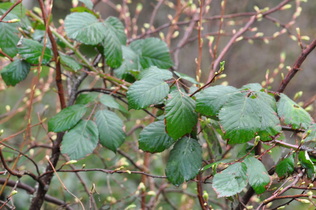 This weed was introduced from India via England into North America in 1855 and was first found in BC in the early 1970's. It is hard to believe that it hasn't been that long given the dense, ecology altering thickets that it can form. The tough poky vines make it difficult to control. It spreads by root and stem fragments as well as birds and omnivorous mammals. Most of the issues that we have with this species (Rubus armeniacus) is around the garden. The berries are yummy but not worth it for the stranglehold that it puts on the native vegetation, garden plants and our ankles. 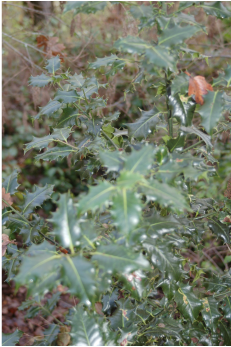 As we write these accounts, it occurs to me there is a growing list of species that we have on the property that we don't want and actively remove. This is another of that ilk, the introduced English Holly, Ilex aquifolia. We don't have many individual plants of English Holly, and when we find them we usually cut them down. Their root systems are quite substantial, so digging is labour intensive and disturbs a lot of ground. Cut stumps often resprout, but repeated cutting will eventually kill the plant. This is a species that is likely spread by birds. In nearby Seattle there is growing concern about the spread of holly and its increasing tendency to grow in the understory of shaded forests. It is so successful that it now outnumbers native conifer seedlings in parts of Seattle and will soon be a dominant tree species in wooded areas. 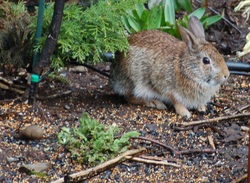 Eastern Cottontails (Sylvilagus floridanus) were introduced to Sooke in 1964 and since then they have spread through much of the southern and eastern part of Vancouver Island. Here their numbers fluctuate widely and quickly. We've had to use wire rabbit-proof mesh on the vegetable garden (the only part of the garden we have fenced against rabbits and deer) in order to ensure we have some greens for ourselves. They do provide food for both Great Horned and Barred Owls and more than one dinner party here has had an owl-rabbit chase as the half time show. From time to time we find a rabbit stomach in the woods or on the lawn, and we don't know what predator has that modus operandi, if you do, leave a comment below. 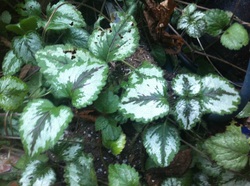 Yellow Archdevil would be a better name. This species is a aggressive weed at Leaning Oaks having escaped from the garden a number of years ago, and despite a steady effort to control it still manages to persist. Lamium galeobdolon is a herbaceous vine that has the ability to root from small pieces dropped from the weed pile or nodes on stems and grow from seed. There is no doubt that the form most often seen has an attractive variegated leaf, but its ability to spread into the wild makes it a decidedly undesirable plant. In shady areas is able to out compete many native plants, and can form thick mats that cover large areas. This is a species that is often spread by people dumping garden waste at the side of a road or the edge of a park. For more information about invasive species in B.C. visit: http://www.bcinvasives.ca/invasive-species/invasive-species  Luckily we have very little Daphne on the property...but every once in a while a few plants pop up. These are quickly pulled! Not only can this plant by invasive and can out compete the native vegetation in undisturbed areas, but it is also toxic. According to the Invasive Species Council of BC (see link below), "the toxins are in the bark, sap and the berries, and if contacted, the sap is known to cause skin rashes, nausea, swelling of the tongue and coma". Nice. Perhaps I will wear gloves the next time that I pull any up! http://www.bcinvasives.ca/general/weed-of-the-week-daphnespurge-laurel As much as we'd love to say that we have a pristine piece of land without aliens...of course it is not true. The Eastern Grey Squirrel (Sciurus carolinensis) was introduced to Vancouver Island in 1966 via a zoo in Metchosin. From that time they have expanded throughout southern Vancouver Island and north past Nanaimo along the east coast. They love the Garry Oak acorns , the spilled bird feed and suet and teasing the dogs. We have done some modest attempts at control and at one point were rewarded with a native Red Squirrel (Tamiasciurus hudsonicus), however we were unable to sustain the control. There is more on this invasive from the Garry Oak Ecosystem Recovery Team: http://www.goert.ca/documents/InvFS_sciucaro.pdf
|
AuthorsTwo biologists on a beautiful property armed with cameras, smart phones and a marginal knowledge of websites took up the challenge of documenting one species a day on that property. Join along! Posts and photographs by Leah Ramsay and David Fraser (unless otherwise stated); started January 1, 2014. Categories
All
Archives
May 2025
|


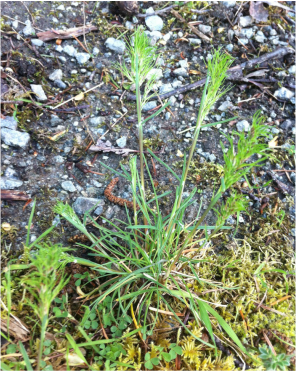


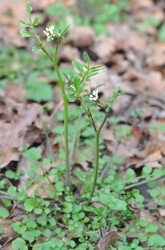
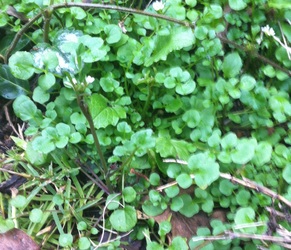
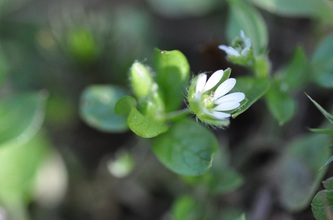
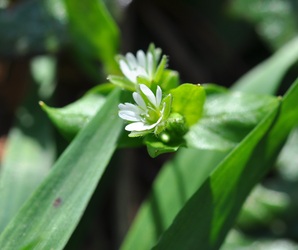
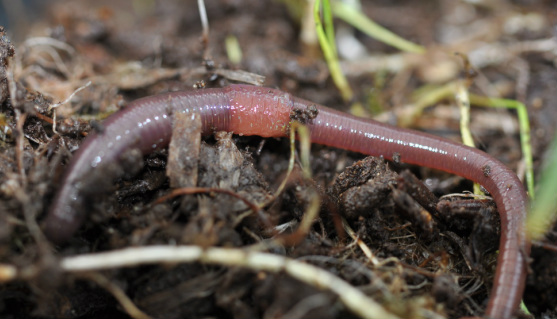
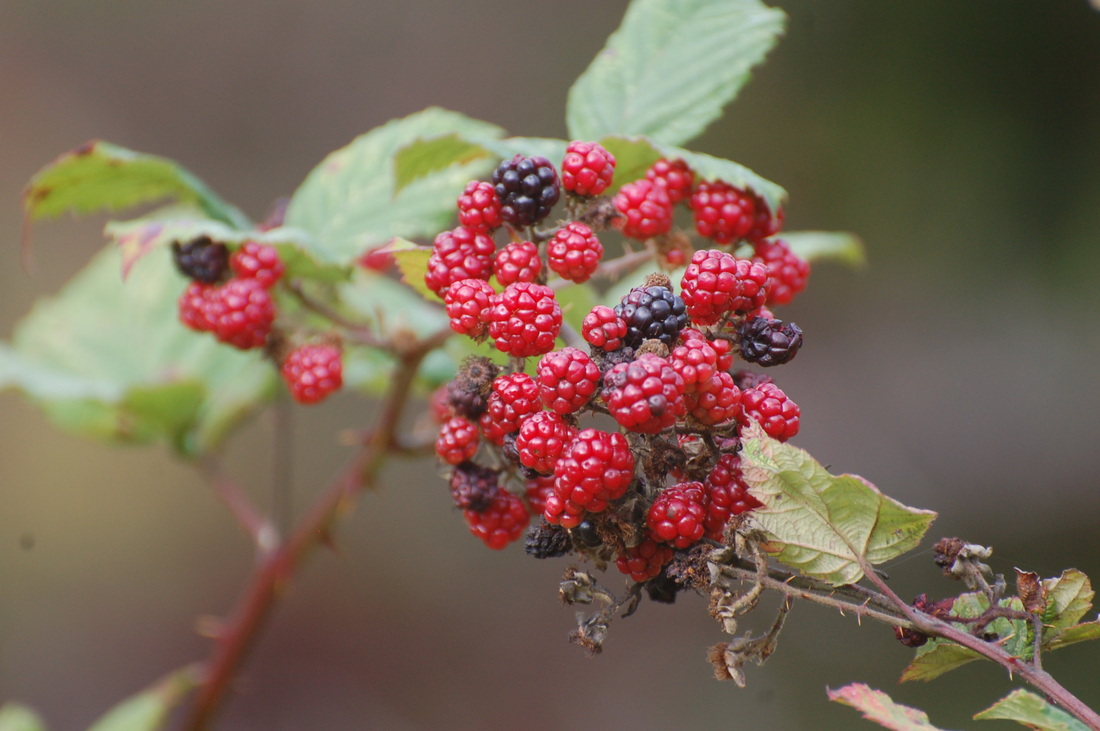
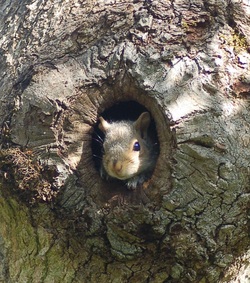
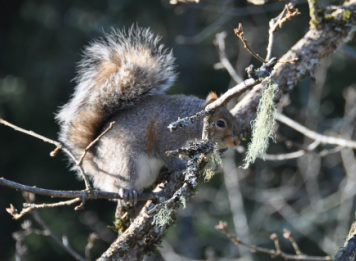
 RSS Feed
RSS Feed